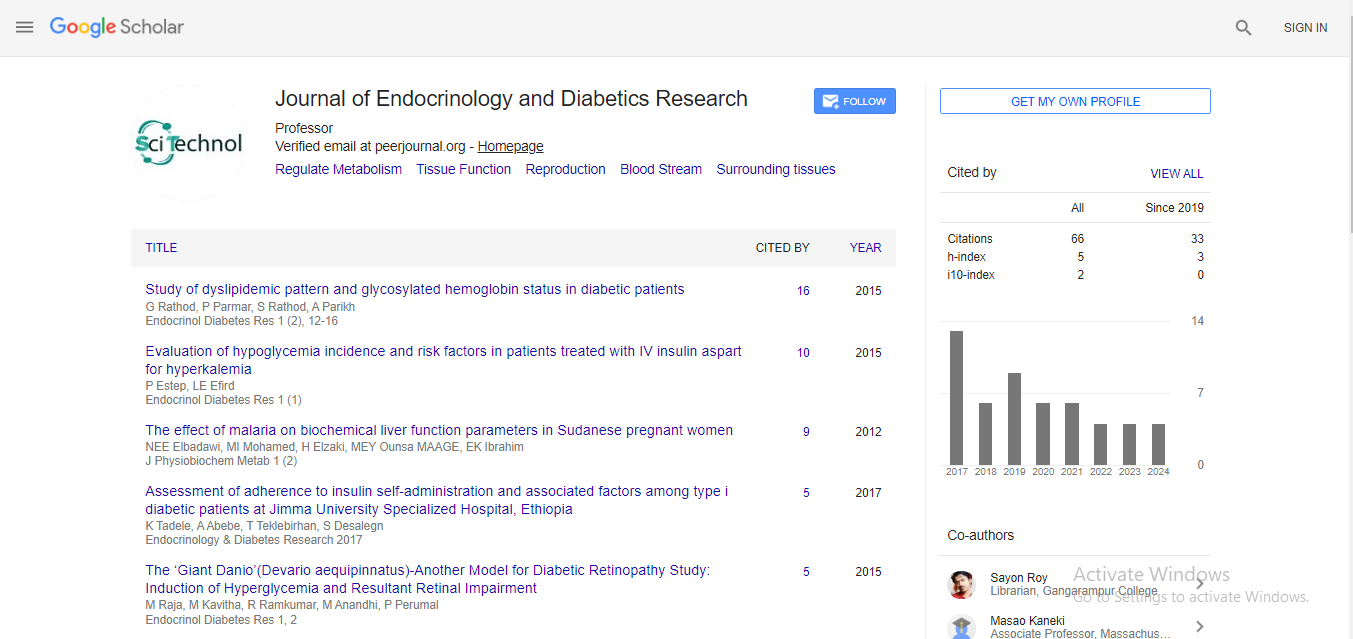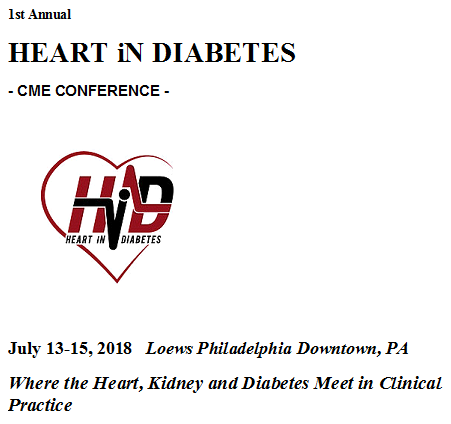Usefulness of urinary biomarkers to estimate the interstitial fibrosis surface in Diabetic Nephropathy with normal kidney function
Jorge Gonzalez
The University Hospital Arnau de Vilanova, Spain
: Endocrinol Diabetes Res
Abstract
Kidney biopsies of patients with diabetic nephropathy (DN) and normal kidney function may exhibit interstitial fibrosis (IF) that do not translate into a reduction of glomerular filtration rate (GFR) because of hyperfiltration. The aim of this study was to analyze the performance of a set of biomarkers of tubular injury to estimate the extent of IF in DN patients with normal kidney function. Methods: This cross-sectional study was performed in 118 adult patients with type II diabetes mellitus who underwent a kidney biopsy between January 2004 and November 2019 at two diferent Hospitals. Mean age was 63.5 ± 16.6, 75.4% were male, mean BMI was 27.3 ±6.1, 73% had hypertension and 92.3% were on ARB (angiotensin receptor blockers). The biopsy indication was proteinuria (2.7 ± 1.9 g/24 h), and all patients had GFR > 90 ml/min/1.73 m2 (measured by Cr-EDTA clearance). 50 healthy subjects (age and gender matched) were used as control group. At the time of biopsy first-morning urine samples were collected, centrifuged and preserved at -80ºC for measurement of MCP-1, NGAL, KIM-1, L-FABP, β2-microglobulin, EGF and DKK-3. IF surface was quantified using a morphometric procedure and analyzed by three different observers. Results: Histopathologically 91% of DN patients showed a glomerular class I, IIa or IIb and 9% showed class III. None showed class IV. The median IF area was 12.2 mm2 (P25: 8 – P75: 19.5). 93.2% showed IF/TA scores < 2 and 6.8% showed a score of 3. The intraclass correlation coeficient was 0.81 95% CI (0.72-0.87). DN patients showed significantly higher levels of DKK3, MCP-1 and L-FABP and significantly lower levels of EGF than healthy controls. There were no significant between-group differences in levels of β2-microglobulin, KIM-1 or NGAL. IF was negatively associated with EGF and positively with age, proteinuria, DKK-3, MCP-1 and L-FABP but no with with β2-microglobulin, KIM-1 , NGAL or GFR. The best model to predict IF surface accounted for 59% of its variability and included age, proteinuria and urinary EGF, DKK-3 and MCP-1. Conclussion: Our study provides a multivariate model to estimate IF in DN that can be useful to assess the future progression in patients with normal kidney function.
Biography
Jorge González is from the The University Hospital Arnau de Vilanova, Spain. And the recent article is Usefulness of urinary biomarkers to estimate the interstitial fibrosis surface in Diabetic Nephropathy with normal kidney function.
 Spanish
Spanish  Chinese
Chinese  Russian
Russian  German
German  French
French  Japanese
Japanese  Portuguese
Portuguese  Hindi
Hindi 


